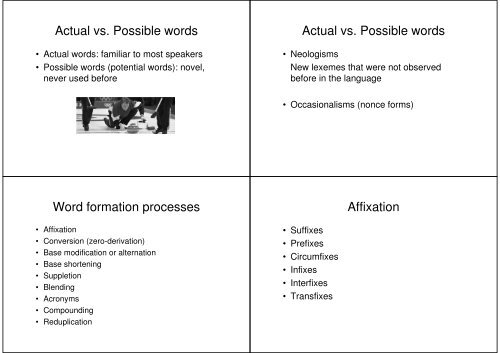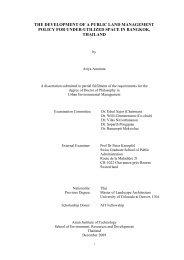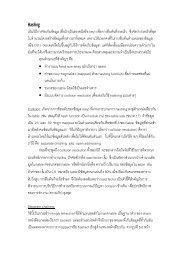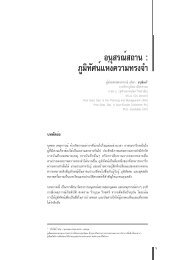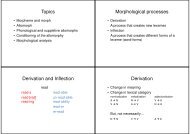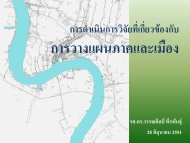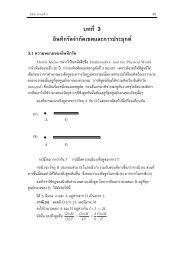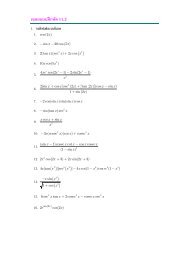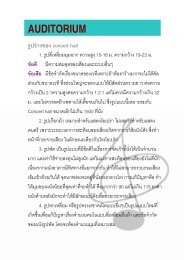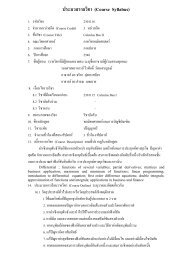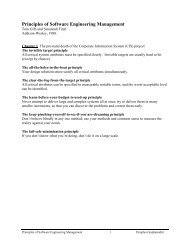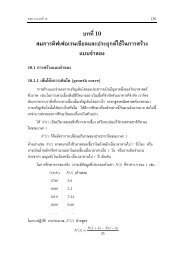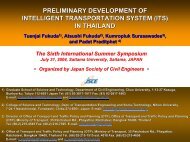Actual vs. Possible words Actual vs. Possible words Word formation ...
Actual vs. Possible words Actual vs. Possible words Word formation ...
Actual vs. Possible words Actual vs. Possible words Word formation ...
Create successful ePaper yourself
Turn your PDF publications into a flip-book with our unique Google optimized e-Paper software.
<strong>Actual</strong> <strong>vs</strong>. <strong>Possible</strong> <strong>words</strong><br />
• <strong>Actual</strong> <strong>words</strong>: familiar to most speakers<br />
• <strong>Possible</strong> <strong>words</strong> (potential <strong>words</strong>): novel,<br />
never used before<br />
<strong>Actual</strong> <strong>vs</strong>. <strong>Possible</strong> <strong>words</strong><br />
• Neologisms<br />
New lexemes that were not observed<br />
before in the language<br />
• Occasionalisms (nonce forms)<br />
<strong>Word</strong> <strong>formation</strong> processes<br />
Affixation<br />
• Affixation<br />
• Conversion (zero-derivation)<br />
• Base modification or alternation<br />
• Base shortening<br />
• Suppletion<br />
• Blending<br />
• Acronyms<br />
• Compounding<br />
• Reduplication<br />
• Suffixes<br />
• Prefixes<br />
• Circumfixes<br />
• Infixes<br />
• Interfixes<br />
• Transfixes
Conversion<br />
• Zero derivation, function shift: same form<br />
deer (sg) deer (pl)<br />
sheep (sg) sheep (pl)<br />
clean (adj) clean (v)<br />
farm (v) farm (n)<br />
Base modification or alternation<br />
• Voicing<br />
house [haus] house [hauz]<br />
strife [straɪf] strive [straɪv]<br />
wreath [riө]<br />
• Gemination<br />
wreathe [rið]<br />
Arabic<br />
darasa ‘learn’ darrasa ‘teach’<br />
waqafa ‘stop intr.’ waqqafa ‘stop tr.’<br />
Base modification or alternation<br />
• Palatalization<br />
Albanian<br />
armik [-k] armiq [-c] ‘enemy/enemies’<br />
murg [-g] murgj [-ĵ] ‘monk(s)’<br />
portokall [-ł] portokaj [-j] ‘orange(s)’<br />
Base modification or alternation<br />
• Umlaut<br />
Icelandic<br />
son-ur ‘son’ syn-ir ‘sons’<br />
full-ur ‘full’ fyll-ri ‘fuller’<br />
English<br />
mouse<br />
foot<br />
mice<br />
feet<br />
• Ablaut<br />
sing, sang, sung<br />
drive, drove, driven
Base modification or alternation<br />
• Vowel shortening<br />
Hindi<br />
maar- ‘kill’ mar- ‘die’<br />
khool- ‘open tr.’ khul- ‘open intr.’<br />
• Vowel lengthening<br />
Huallga Quechua<br />
aywa-nki ‘you go’ aywa: ‘I go’<br />
aywa-pti-ki ‘when you went’aywa-pti: ‘when I went’<br />
aywa-shka-nki ‘you have gone’ aywa-shka: ‘I have gone’<br />
Base modification or alternation<br />
• Changes in stress or tone<br />
English<br />
‘discount<br />
‘import<br />
‘insult<br />
dis’count<br />
im’port<br />
in’sult<br />
Chalcatongo Mixtec<br />
káʔba ‘filth’ káʔbá ‘dirty’<br />
žuù ‘rock’ žúú ‘solid, hard’<br />
xaʔà ‘foot’ xáʔá ‘standing’<br />
• Subtractive morph<br />
Base shortening<br />
A morph that is removed by a morphological<br />
process<br />
French<br />
Masculine Feminine<br />
movɛ movɛz ‘bad’<br />
pəti pətit ‘little’<br />
fo fos ‘false’<br />
ʃo ʃod ‘hot’<br />
Base shortening<br />
• Back <strong>formation</strong><br />
A derivational affix is removed.<br />
television<br />
editor<br />
uncouth<br />
teach<br />
televise<br />
edit<br />
couth<br />
teacher<br />
• Clipping<br />
No change in meaning or part of speech<br />
science fiction<br />
refrigerator<br />
sci fi<br />
fridge
good<br />
go<br />
bett-er<br />
went<br />
Suppletion<br />
French<br />
DONNER ‘to give’ ALLER ‘to go’<br />
Je donn-e ‘I give’ Je vais ‘I go’<br />
Je donn-er-ai ‘I will give’ J’ir-ai ‘I will go’<br />
Je donn-ais ‘I gave’ J’all-ais ‘I went<br />
Blending<br />
• Blends (portmanteau <strong>words</strong>)<br />
smoke + fog smog<br />
clay + animation clamation<br />
slang + language slanguage<br />
binary + digit bit<br />
Hebrew<br />
pri ‘fruit’ + yogurt ‘yogurt’ prigurt ‘fruit yogurt’<br />
kadur ‘ball’ + regel ‘foot’ kaduregel ‘football’<br />
Acronyms<br />
• <strong>Word</strong>s coined from initial letters of the<br />
<strong>words</strong> in a name, title or phrase<br />
AIDS – Acquired Immunity Deficiency Syndrome<br />
UN – United Nations<br />
FBI – Federal Bureau of Investigation<br />
Unique morphs<br />
• Only occur in one fixed expression<br />
laughter<br />
inert<br />
lukewarm<br />
cranberry<br />
cranberry morphs
Compounding<br />
• A compound is a complex lexeme that<br />
consists of two or more lexemes.<br />
• Compound members<br />
• N + N pattern is extremely productive.<br />
Compounding<br />
• Compound members are generally lexeme<br />
stems, not inflected word-forms.<br />
– lipstick, *lipsstick<br />
– child support, *children support<br />
• Compounds with internal inflections<br />
Danish<br />
ny-t-aar<br />
new-neuter-year<br />
‘new year’<br />
Turkish<br />
din-i-butun<br />
religious-possessive-whole<br />
‘devout’<br />
Compounding<br />
• Endocentric compounds<br />
lipstick<br />
Finnish huone-kalu-tehdas (room-article-factory)<br />
‘furniture factory’<br />
French oiseau-mouche (bird-fly) ‘humming bird’<br />
• Exocentric compounds<br />
redneck<br />
yellowtail<br />
Danish lang-øre (long-ear) ‘long-eared bat’<br />
Endocentric compounds<br />
• An endocentric compound has a head and<br />
refers to a sub-class of the items denoted<br />
by one of the elements.<br />
• The compound is a hyponym of its main<br />
or head element.<br />
• Dependent: the modifying, less important<br />
element
Endocentric compounds<br />
• In English, the head is always the second<br />
member.<br />
computer man, train station<br />
• In Spanish, the head is the first member.<br />
ano luz<br />
year light<br />
‘light year’<br />
pez espada<br />
fish sword<br />
‘sword fish’<br />
• Diverse semantic relations, e.g. purpose,<br />
appearance, location, event participant,<br />
etc.<br />
Exocentric compounds<br />
• An exocentric compound does not have a<br />
head and its meaning is not a sub-class of<br />
either of the elements in the compound.<br />
• Not a hyponym of compound members<br />
bonehead, sweetheart<br />
Endocentric and exocentric<br />
compounds<br />
• Identify each of the following compounds<br />
as either endocentric or exocentric.<br />
a. lawmaker<br />
b. make-up<br />
c. mainstream<br />
d. playpen<br />
e. aftertaste<br />
f. graveyard<br />
Exocentric compound<br />
• Bahuvrihi: Sanskrit exocentric compound<br />
‘having much rice’ = ‘a rich man’<br />
Greek<br />
kako-bios (kakos ‘bad’ + bios ‘life’)<br />
‘having bad life’,<br />
heduoinos (hedus ‘sweet’ + oinos ‘wine) ‘having sweet wine’ =<br />
‘someone who has sweet wine’<br />
• Affix compounds<br />
มี stem มากกว่าหนึง + an affix<br />
green-eyed, dark-haired, red-roofed
Copulative compounds<br />
• Denote an entity made up of the two<br />
elements in the compound<br />
Korean<br />
elun-ai ‘adult and child’ (elun ‘adult’ + ai ‘child’)<br />
Appositive compounds<br />
• Both compound members have the same<br />
reference.<br />
maidservant, bitter-sweet, singer-songwriter<br />
Tamil<br />
appaa-v-amma<br />
‘parents’ (appaa ‘father’ + amma ‘mother’)<br />
Vietnamese<br />
sot-ret ‘malaria’ (sot ‘be hot’ + ret ‘be cold’)<br />
• Coordinative compounds, dvandva<br />
Spanish<br />
poeta-pintor<br />
actor-bailarin<br />
‘poet who is also a painter’<br />
‘actor who is also a dancer’<br />
Synthetic compounds<br />
• The head element contains a verb; the modifying<br />
element could function as an argument of that verb.<br />
carwash<br />
Alutor<br />
gəmmə tə-məng-ilgətav-ək<br />
I 1SG-hand-wash-1SG<br />
‘I hand-washed.’ (= I washed my hands.)<br />
Neo-classical compounds<br />
• Lexemes in compounds are of Greek or<br />
Latin origin.<br />
biometry, biology, geology, geometry<br />
กรณีนีน่าสนใจว่า compound กับ derivation บางครังก็แยกไม่ได้ชัดเจน<br />
telegraph อาจมองเป็น affix –graph หรือ lexeme graph<br />
Guarani<br />
A-mba’e-jogua-ta<br />
1ACT-thing-buy-FUT<br />
‘I’ll go shopping.’
Hierarchical structure<br />
• ใน endocentric compound head กําหนดโดยส่วนที<br />
เติม affix e.g. lip + stick-s<br />
– มอง –s ว่าเติมทัง lexeme [lipstick]-s <br />
– Spanish ano-s + luz not *anoluz-es<br />
Hierarchical structure<br />
• ใน excocentric compound จะไม่ mark affix<br />
แบบเดียวกับ endocentric เพราะไม่มี head<br />
เดียว จะ mark ต่างไป<br />
• Plural marking<br />
sabertooths, *saberteeth<br />
Spanish: actores-bailarines [double plural marking]<br />
Hierarchical structure<br />
• Compound ทีมีคําหลายคํา อาจวิเคราะห์ได้<br />
หลายแบบ<br />
• [nuclear [power station] ]<br />
• [ [nuclear power] station ]<br />
Bauer (2008)<br />
• Classification of different types of<br />
exocentric compounds<br />
• Cross-linguistic observations<br />
• Infrequency of exocentric compounds,<br />
comparing to endocentric compounds<br />
• Re-analyses of exocentric compounds
Tree diagrams<br />
• Draw tree diagrams for the following<br />
compounds:<br />
credit card agreement form<br />
major league baseball game<br />
Chulalongkorn University Linguistics Student Club<br />
Are these <strong>words</strong> compounds<br />
คนขับรถ, สีชมพู, ดาดฟ้าเรือ, ตารางเรียน, คําแนะนํา, ห้องทํางาน,<br />
ห้างสรรพสินค้า, เสาอากาศ<br />
ออกกําลังกาย, ซ่อมบํารุง, เดินทาง, ตรวจสอบ, สอนหนังสือ, ทํา<br />
ความสะอาด, ออกดอก, ควบคุมตัว<br />
Compounds and syntactic<br />
constructions in Thai<br />
• Lexicalization of syntactic constructions in<br />
Thai (Prasithrathsint 2010)<br />
• Structural ambiguity<br />
มีไฟไหม้ห้าแห่งในเมือง<br />
ไฟไหม้น่ากลัว ไฟมอดไม่น่ากลัว<br />
ไฟไหม้อาคารพังลงมาที พื นดิน<br />
Prasithrathsint 2010<br />
• Semantic criteria<br />
– N+V compounds have specialized or idiomatic<br />
meanings.<br />
• Syntactic criteria<br />
– N+V compound nouns can occur with níi.<br />
– N+V compound verbs can occur with mây.<br />
– No word can be placed inside an N+V compound<br />
without changing its specialized meaning.<br />
• The findings support the theory of lexicalization<br />
(Brinton et al. 2005, Talmy 1985).
Reduplication<br />
• Part of the base or the entire base is<br />
copied and attached to the base.<br />
• Whole <strong>words</strong><br />
Afrikaans<br />
amper ‘nearly’ amper-amper ‘very nearly’<br />
dik ‘thick’ dik-dik ‘very thick’<br />
• Prereduplication<br />
Reduplication<br />
Motu<br />
tau ‘man’ ta-tau ‘men’<br />
mero ‘boy’ me-mero ‘boys’<br />
meromero<br />
‘little boy’<br />
memeromemero ‘little boys’<br />
• Postreduplication<br />
Maori<br />
aahua ‘appearance’ aahua-hua ‘resemble’<br />
hiikei ‘step’ hiikei-kei ‘hop’<br />
Reduplication<br />
• Duplifixes: mixture between affix and<br />
reduplicant (fixed segments and copied<br />
segments)<br />
Somali plurals: duplifix -aC<br />
buug ‘book’ buug-ag ‘books’<br />
fool ‘face’ fool-al ‘faces’<br />
koob ‘cup’ koob-ab ‘cups’<br />
jid ‘street’ jid-ad ‘streets’<br />
Reduplication<br />
• Indicate plurality, intensity and repetition<br />
Tagalog<br />
sumulat ‘to write’ su-sulat ‘will write’<br />
bumasa ‘to read’ ba-basa ‘will read’<br />
ʔumaral ‘to teach’ ʔa-ʔaral ‘will teach’
Regier (1998)<br />
• Examined instances of reduplication<br />
cross-linguistically<br />
• Senses include contempt, small, scatter,<br />
lack of control, plurality, intensity,<br />
affection, baby, continuity, and completion.<br />
• These senses are conceptually related.<br />
– Baby, repetition, plurality<br />
• An interaction of iconicity and semantic<br />
extension


